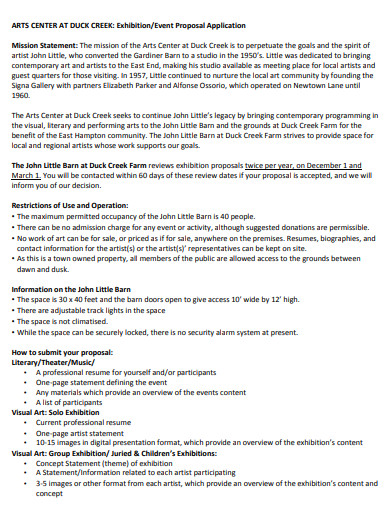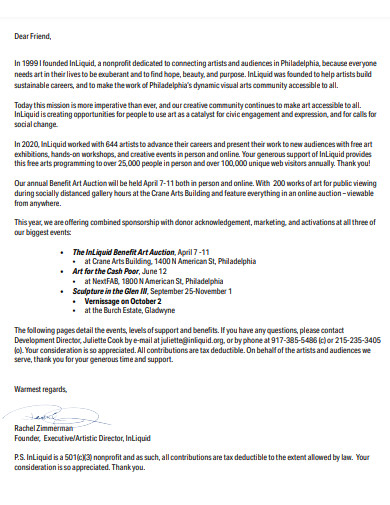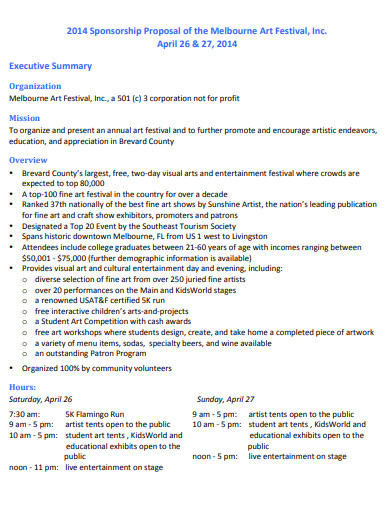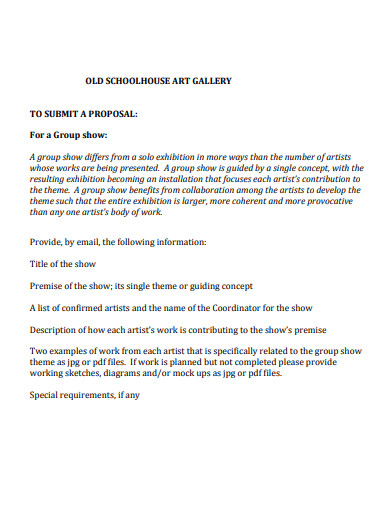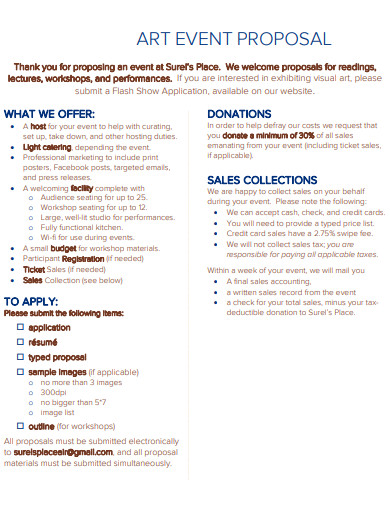Art events, or also commonly called exhibitions are a great way for artists to showcase their works to the public for admiration and publicity. Sometimes, art galleries and museum curators do this to show various artists’ works with a common theme to raise funds and bring awareness to a cause. If you’re an artist or a curator, or an events organizer, you know that to be able to hold art events on different venues and gather resources to make it possible, you may need to ask permission from certain authorities or ask businesses for sponsorships. To do that, you need a proposal to aid you in negotiating with these people. Read the article to know how to create an art event proposal.
6+ Art Event Proposal Samples
1. Art Event Proposal
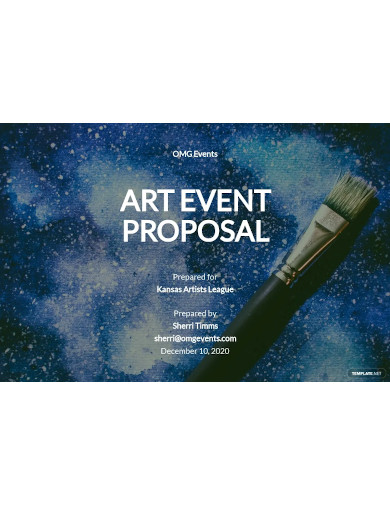
2. Sample Art Event Proposal
3. Simple Art Event Proposal
4. Art Event Exhibition Proposal
5. Art Event Exhibition Proposal Example
6. Art Gallery Event Proposal
7. Formal Art Event Proposal
What is an Art Event?
An art event, or also called an art exhibition is where art objects are gathered in a space to have the opportunity to meet an audience for a temporary time. Most artworks are presented in museums, art halls, art clubs, or private art galleries, or even on the streets or at coffeehouses. The exhibition may include works by a single artist, or on a single theme, from a specific era, from a defined geographic region, or a combination of all of these.
How to Write an Art Event Proposal
1. Introduce Yourself in a Cover Letter
Begin your proposal with a title page. Include the name of the proposal, the name of the exhibition manager, the name of the exhibition, and your name. Follow this page with an introduction where you will compliment them on a recent exhibition or you’ve done some research over them, the people you know associated with the venue, and your intention of organizing an exhibition yourself.
2. Describe the Artwork You’ll Showcase
The next section is where you will give more details about your exhibition event. Include these details when you explain this section:
- The body of work that you’re showing
- Name of the artist/s you’re featuring (Include a short personal and work background)
- The type of artwork
- Inventory of all the artwork to be displayed
- The space needed for the artwork (include a map of the venue)
- The cost of the resources needed in the exhibit
- The timeline of the whole show
- The budget needed to do the exhibit
- The captions and artist statement
3. Explain the Concept
Of course, you need to let the reader understand what your artworks are all about. This section is where you’ll properly explain the concept and ideas behind the artwork. Explain why you’re grouping these particular works, why it is a solo show or a group of artists doing the event, what mediums are used to display the artwork, the common themes of every artwork, and what subject or issue it is focusing on, just to name a few. Provide a title of your art event to help introduce the audience to the work and strike up a conversation.
4. Explain the Relevance of the Artworks
Explain why your artwork exhibition is relevant enough to be done. Indicate its relevance to the venue, to the art community, or people in general.
5. Include Images
Conclude your proposal by including images of the artwork you will display in the exhibit in the proposal. For a small exhibit, including all of the works you plan on displaying. For a larger show, include only 10-20 images as long as they represent the entire exhibition.
FAQs
What are the types of art exhibitions?
There are a wide variety of art exhibitions that exist around the art industry. Some examples are solo, collective, temporary, itinerant, online, and anthological exhibitions.
What are the four main categories of art styles?
The four main categories of art styles are:
- Literature: poetry, drama, story
- Graphic arts: painting, drawing, design,
- Plastic arts: sculpture, modeling
- Decorative arts: enamelwork, Ceramics, glassware, basketry, jewelry, metalware, furniture, textiles, and clothing.
Once you’re done drafting the proposal, make sure to review it first and check to see if there are any errors or wrong information being input. Discuss and negotiate it well with museum or gallery managers or potential sponsors to convince them to give you the support you need to successfully organize the event. To help you get on creating the proposal, download our free sample templates above to use as your guide!
Related Posts
Proposal Samples
Sports Event Proposal Samples
Small Business Proposal Samples
Title Project Proposal Samples [ Community, School, Student ]
FREE 10+ Health Project Proposal Samples [ Public, Mental, Healthcare ]
FREE 11+ Engineering Project Proposal Samples in PDF | MS Word
FREE 4+ Racing Sponsorship Proposal Samples [ Team, Car, Driver ]
FREE 10+ Nursing Project Proposal Samples [ Community, Health, Clinical ]
FREE 11+ Student Council Proposal Samples in PDF | DOC
FREE 8+ Joint Venture Proposal Samples [ Commercial, Real Estate, Construction ]
FREE 10+ Scholarship Proposal Samples [ Project, Grant, Sponsorship ]
FREE 10+ Network Project Proposal Samples [ Design, Security, Bank ]
FREE 14+ Accounting Proposal Samples in PDF | MS Word
FREE 10+ Church Event Proposal Samples in MS Word | Google Docs | Apple Pages | PDF
FREE 10+ History Proposal Samples [ Dissertation, Thesis, Paper ]

